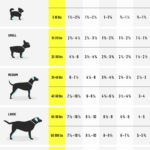Why Does My Dog Smell My Butt
Why Does My Dog Smell My Butt: The Surprising Science and Social Signals Behind Canine Behavior
If you’re a dog owner, you’ve probably wondered why your furry friend likes to sniff your rear end. Maybe you’ve even felt embarrassed or offended by this behavior, especially when it happens in public. However, as strange as it may seem to us humans, smelling butts is a natural and important part of dogs’ social communication system. In fact, it can reveal a lot about their identity, mood, health, and intentions.
In this article, we’ll explore the reasons why dogs smell butts, what they’re smelling for, how they do it, and what you can learn from their olfactory cues. We’ll also debunk some myths and misconceptions about this behavior and give you some tips on how to handle it with grace and humor.
Table of Contents:
Introduction: Why Does My Dog Smell My Butt?
Part 1: The Science of Olfaction
– How Dogs Smell: Anatomy and Physiology
– The Power of Scent: Compared to Humans and Other Animals
– The Brain of a Sniffer: How Dogs Process Odors
Part 2: The Social Signals of Butt-Sniffing
– What Dogs Are Looking For: Chemical Information
– The Four P’s of Canine Identity: Personal, Pack, Parental, and Prey
– The Emotions Behind the Scents: Positive and Negative Associations
Part 3: The Etiquette of Butt-Sniffing
– When Is It Appropriate (and Inappropriate) for Dogs to Sniff Butts?
– How to Read (and Respond to) Your Dog’s Signals During Greetings
– How to Handle Awkward Situations with Other Owners and Their Dogs
Conclusion: Love Your Dog (and Their Nose)
Part 1: The Science of Olfaction
To understand why dogs smell butts, we first need to appreciate the amazing sense of smell that they possess. Dogs have up to 300 million olfactory receptors in their noses, compared to our mere 6 million. This means that they can detect odors at concentrations as low as parts per trillion, and distinguish between different compounds within a complex mixture.
Moreover, dogs have a special organ called the vomeronasal or Jacobson’s organ that lies between their nasal cavity and their mouth. This organ is responsible for detecting pheromones, which are chemical signals that animals use for social communication. Pheromones can convey information about identity, reproductive status, dominance, aggression, fear, anxiety, and many other aspects of behavior and physiology.
The combination of these olfactory abilities makes dogs excellent detectors and analyzers of scents. They can track a scent trail for miles, locate buried objects or people, identify individual humans by their body odor or breath, diagnose diseases by smelling urine or feces samples, and even detect some types of cancer or explosives.
Part 2: The Social Signals of Butt-Sniffing
Now that we know how dogs smell, let’s see what they’re smelling for when they sniff butts. Contrary to popular belief, dogs are not trying to get a whiff of your poop or gas (although they may do so accidentally). Instead, they’re trying to gather information about your identity and status within the social group.
According to researchers who have studied canine olfaction and behavior, dogs use butt-sniffing as a way to exchange pheromonal cues with each other. When two dogs meet for the first time or after an absence, they often approach each other from the side or rear end and sniff each other’s anal area. This behavior is called anogenital investigation or AGI.
During AGI, dogs can learn several things about each other, such as:
– Gender and sexual maturity: Male dogs can detect the presence of female or male pheromones in urine or anal glands, which can give them cues about reproductive availability or competition. Female dogs can also tell if a male is neutered or intact, which may affect their mate choice.
– Breed and individual identity: Each dog has a unique set of pheromones that reflect their genetic makeup, diet, health status, and environmental exposure. By smelling another dog’s butt, they can recognize familiar or unfamiliar scents and distinguish between breeds or mixed breeds.
– Social hierarchy and dominance: Dogs use AGI to establish or reaffirm their rankings within their pack or group. Higher-ranking dogs may initiate AGI as a way to assert their authority over lower-ranking dogs, who may submit by lowering their tails or avoiding eye contact. However, some dogs may challenge the dominant one by sniffing back or even nipping at their nose.
– Emotional state and intention: Dogs can emit different types of pheromones depending on their emotional state, such as fear, anxiety, aggression, playfulness, arousal, or relaxation. By smelling another dog’s butt, they can assess whether they pose a threat or a friend. They can also detect whether a dog is in heat, pregnant, sick, injured, or stressed.
Part 3: The Etiquette of Butt-Sniffing
Now that we know why dogs smell butts and what they’re looking for, let’s see how we humans should react to this behavior. While we may find it weird or gross to have our dogs sniff our butts (or worse, someone else’s), we need to respect their natural tendencies and social norms. Here are some tips on how to handle butt-sniffing in different situations:
– At home: If your dog likes to sniff your butt when you come home from work or after a shower, don’t take it personally. He’s probably just happy to see you and wants to confirm your identity and mood. You can make this ritual more pleasant by giving him a treat or a toy to distract him while you greet him with a hug or pat.
– On walks: If your dog likes to sniff other dogs’ butts on walks, let him do so as long as the other owner agrees. You can ask the other owner if their dog is friendly and whether they mind if your dog sniffs their butt. If they say no, respect their wishes and keep your dog away from theirs. If they say yes, let your dog approach slowly and calmly, and observe their body language for signs of discomfort or aggression.
– In public places: If your dog likes to sniff strangers’ butts in public places such as parks, cafes, or stores, be aware that some people may not appreciate this behavior. To avoid conflict or embarrassment, keep your dog on a leash and under control at all times. Don’t let him approach people without their permission, especially children or elderly who may be scared or allergic to dogs. If someone asks you to restrain your dog, apologize politely and comply with their request.
– With new dogs: If you’re introducing your dog to a new dog for the first time, let them smell each other’s butts first before allowing them to play together off-leash. This will help them establish their social hierarchy and avoid misunderstandings or conflicts later on. However, watch them closely for any signs of aggression or fear, such as growling, snarling, snapping, cowering, or backing off. If necessary, separate them immediately and try again later with a different approach.
Conclusion: Love Your Dog (and Their Nose)
In conclusion, butt-sniffing may seem like a weird or rude behavior for us humans, but it’s actually an essential part of dogs’ social communication system. By smelling each other’s butts, dogs can gather valuable information about their identity, status, and emotions. As dog owners, we need to respect their natural tendencies and social norms, and learn how to handle butt-sniffing with grace and humor. After all, our dogs love us unconditionally, even if they sniff our butts sometimes. So let’s love them back, nose and all!



